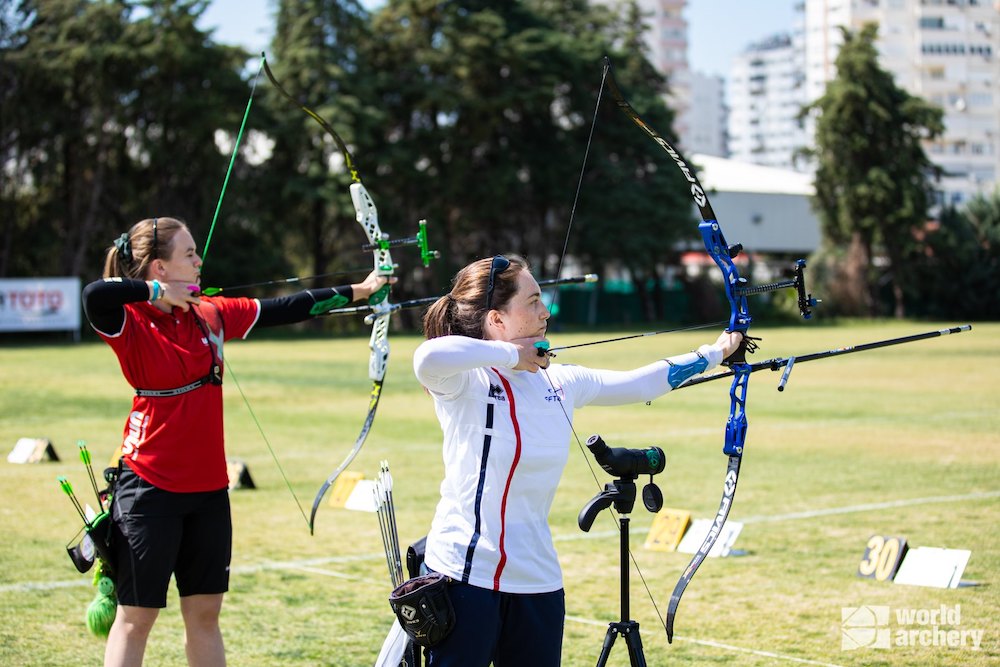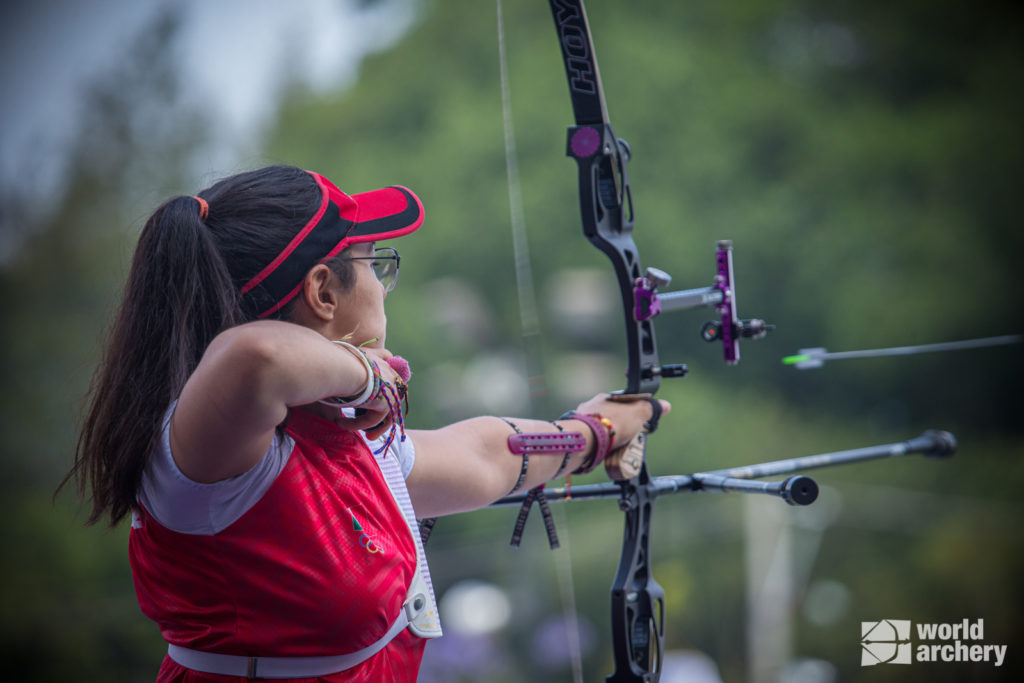Purchasing an Olympic recurve bow can be a daunting task, especially when you look at all the options available: Do you pick wood, foam or bamboo limbs? Aluminum or carbon riser? What size of bow do you need? All these questions (and more) will likely arise when you’re trying to choose the bow for you.
One of the first considerations is the size of bow you’ll be buying. They range in lengths from 64 to 72 inches in 2-inch increments; Hoyt also has a new 75-inch model. The overall bow length is determined by the length of the riser in combination with the length of the limbs. Risers come in 23, 25 and 27 inches, and limbs in small, medium, long and extra-long, with each step up increasing the bow length by 2 inches. For example, a 25-inch riser paired with medium limbs gives you a 68-inch bow, and a 25-inch riser with long limbs gives a 70-inch bow. Your choices largely depend on your draw length. Basically, the longer your draw length, the longer the bow you’re going to need. In general, bow sizes are made to accommodate a small range of draw lengths:
| Draw length (in inches) | Overall bow length (in inches) |
| 24-26 | 64-66 |
| 26-28 | 66-68 |
| 28-30 | 68-70 |
| Greater than 31 | 72 |
| Greater than 33 | 75 |
To determine your correct draw length, you can ask your local archery shop to help with the measurement. Make sure to bring your finger tab so that the measurement is more accurate. Bow lengths are made to function within the draw-length ranges listed above. A bow will be the most efficient when drawn to the proper draw length. If you use a bow that’s too long, you will not be opening the limbs as much when you reach full draw, and therefore you won’t be shooting the arrow to its maximum potential speed. If you shoot a bow that’s too short, it will be “critical,” which basically means uncontrollable. It will be too erratic to shoot and inconsistent as well.

Limbs are made from a variety of materials and each affects how the bow feels when drawn. Photo Credit: World Archery
Another consideration is the materials of your riser and limbs. In doing some research, you’ll find that riser and limb prices jump up drastically when you look at the high-end, elite-level equipment. Generally, the lower-end limbs will be made of wood and fiberglass, while the higher-end limbs will have carbon, foam, wood, or bamboo. Basic risers can be made of forged magnesium or aluminum with limited adjustability; as prices go up, you’ll see aluminum, carbon, or even graphene. The differences in materials will affect the feel of the bow when a shot is executed, and this will come down to personal preference. The feel of the bow is a combination of the draw cycle (how the limbs pull back against your fingers while at full draw) and the vibration felt when the arrow is released.
Different limb materials will affect the feeling of the draw cycle, with foam generally being smoother to draw back than wood. If you’re thinking that smoother is better, you’re right in some respects, but some archers like having something to “fight” against while shooting and therefore prefer the wood limbs over the foam. Also, an archer can choose to shoot a longer bow size in order to have a smoother-feeling bow if they know that it will not greatly affect their performance.

Carbon and aluminum risers each affect the shock produced by the string when the arrow leaves the bow (as pictured here). Photo Credit: World Archery
Aluminum and carbon risers absorb shock differently (because of the physical construction of the riser) and this is a key consideration for comfort. When shot, carbon risers leave the archer with a high-frequency vibration in their hand, whereas aluminum risers leave a more subdued low frequency. This can be dampened or accentuated when paired with different limb materials. Of course, the draw length will be a big variable in defining what the bow will feel like. Your best bet is to go to your local archery shop and try the bows to search for the feeling you like best.
These tips will help get you started in choosing a bow before thinking about what you want in a stabilizer setup, what type of arrows to shoot, etc. Make sure to ask lots of questions at your local pro shop and learn as much as you can about your bow once you’ve made your decision.




